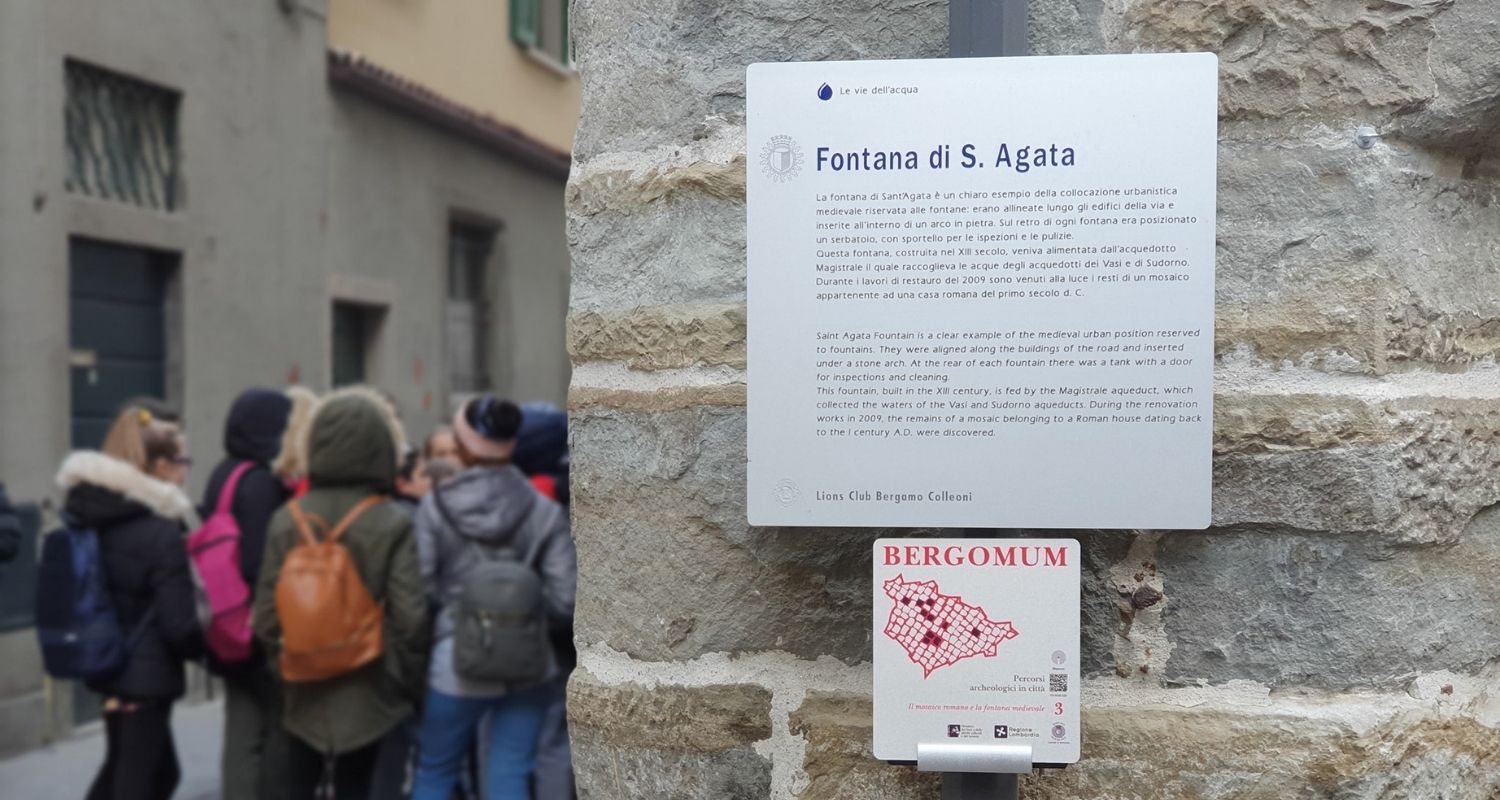

WATER ITINERARY
23 March| Ora 08:45
With the participation of Massimiliano Milesi
Massimiliano Milesi (tenor sax) and Daniele Richiedei (violin and viola)
Who better than Uniacque, the fully public-owned company that has been managing the integrated water service in Bergamo and its province since 2006, can tell the underground story of water – thanks to the valuable and indispensable collaboration of the speleological groups Le Nottole
and the Sebynica Association – in a prestigious site like the setting of the Upper City?
The “Water Itinerary” develops along a stretch of streets and alleys of about 3 km, entirely within the spectacular 17th-century Venetian Walls: an itinerary – Aquae Ductus Bergomensis – that will take the “visitor by the hand, guiding them through different historical epochs, where the” artistic, architectural, and engineering evolution of the aqueduct complex manifests itself in all its foresight. There are 15 identifying stops on our tour “inside the Walls.
The meeting point for the visit and its first stop will be at Colle Aperto. We then move to the upper room of the Porta di Sant”’Alessandro, where you can admire the passage of the Vasi aqueduct. We continue to Piazza Mascheroni, under which one of the large water reserve tanks is hidden, then descend to the Vagine spring and climb back up to Via Arena, along the route of the “Magistral Aqueduct. We then reach the Antescolis fountain, the Visconti fountain, and Piazza Vecchia, to admire the Contarini fountain. From the square, we move to the washhouse in Piazza Angelini, then along Via Gombito to the San Pancrazio fountain, and finally reaching Piazza Mercato delle Scarpe, where it’s possible to admire another” cistern. The visit could end at the Sant’Eufemia fountain.
But this year there will be a novelty!
Some of the stops on the Water Itinerary “will be accompanied by musical moments featuring, solo or in duo, saxophonist Massimiliano Milesi and violinist and violist Daniele Richiedei. The proposed music will follow an improvisational itinerary ranging from folkloric echoes to jazz and contemporary music.
Massimiliano Milesi and Daniele Richiedei share the” experience of the “experimental ensemble Take Off, directed by composer Mauro Montalbetti. A project that mixes contemporary music with” collective improvisation. The two musicians, drawing on the ideas developed in this laboratory, will interweave their respective sensibilities to give body to a rich and multifaceted dialogue. The roles of their respective instruments will constantly change in search of unusual timbres and mysterious rhythmic-melodic fluctuations.
The average travel time – calculated, as is appropriate, at a more “touristic” pace, for those who duly linger on the historical/artistic and architectural beauties – is about 2 and a half hours.



